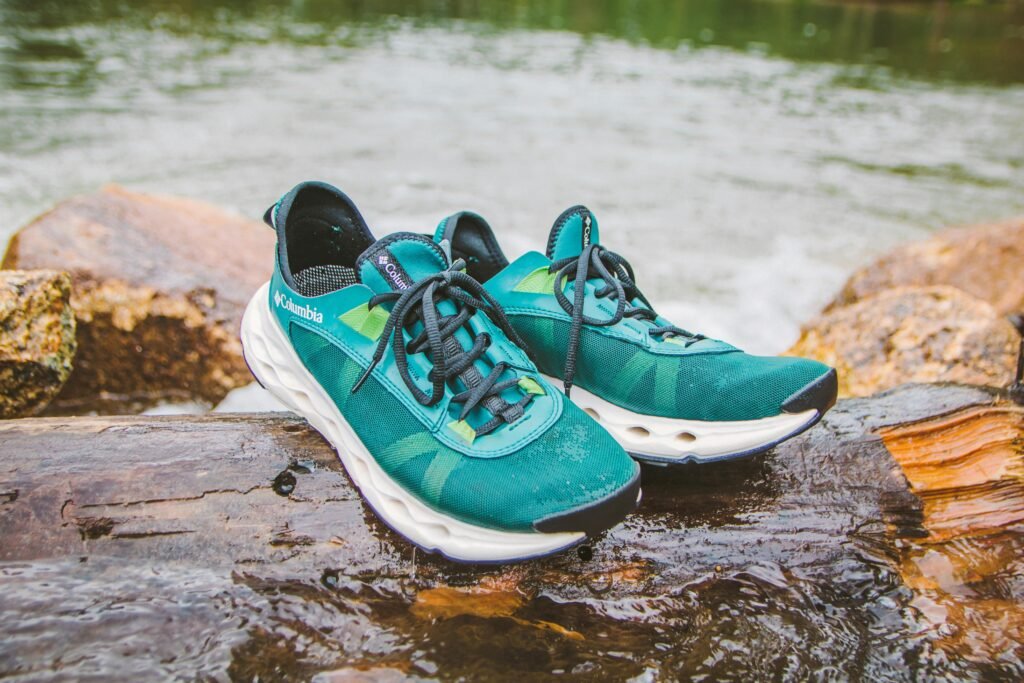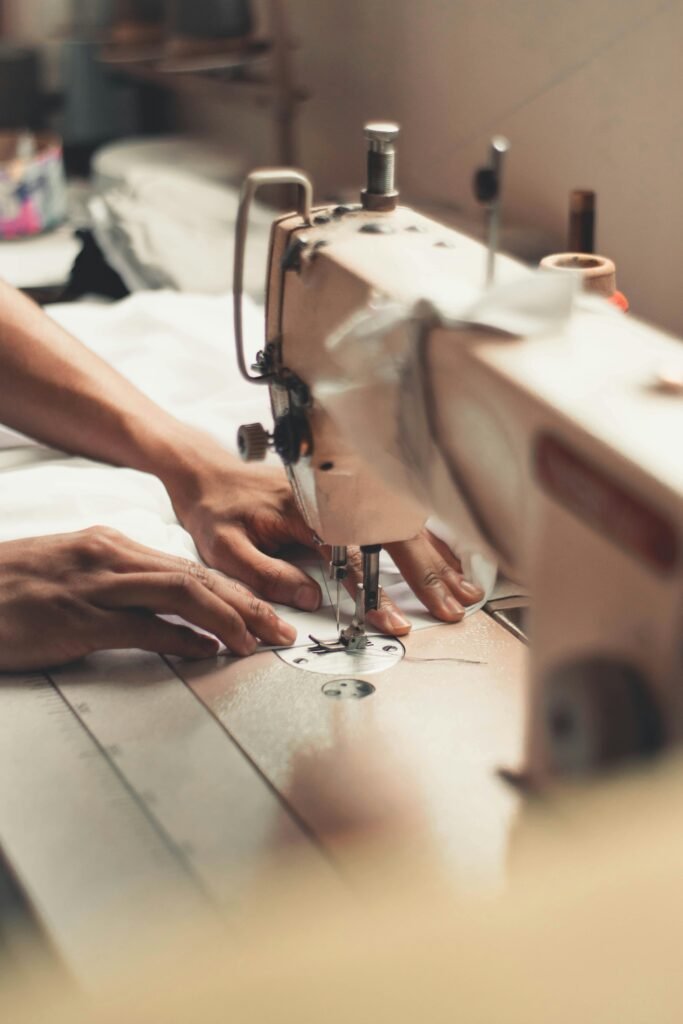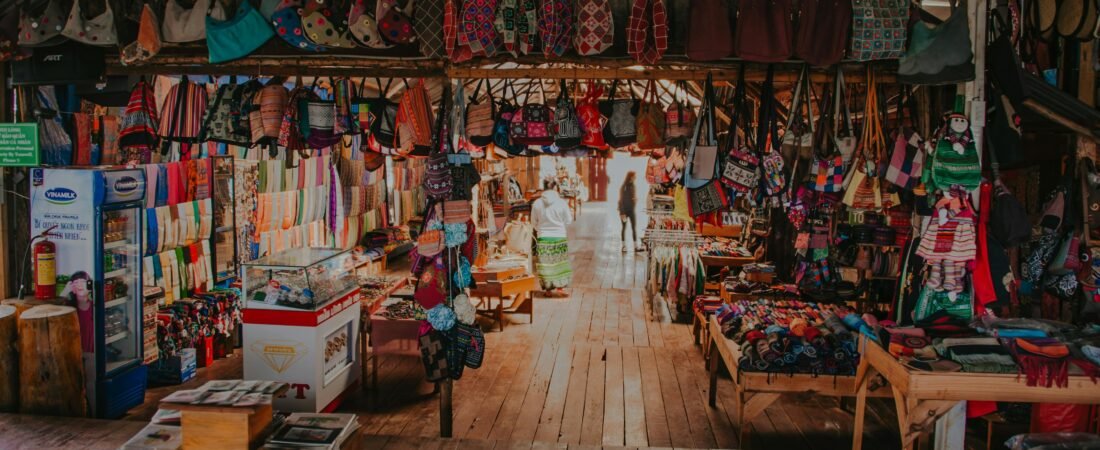Last updated: July 2025
Getting started with hiking shouldn’t require taking out a second mortgage. While outdoor retailers would love you to believe you need the latest $500 jacket and $300 boots to safely hit the trails, the truth is that you can build a solid hiking kit without spending a fortune. After helping newcomers discover the joy of hiking, I’ve learned that smart shopping and strategic choices matter far more than brand names when it comes to budget hiking gear.
The outdoor industry (and marketing as a whole) has done an impressive job convincing us that expensive equals better, but some of my most memorable adventures have happened wearing thrift store finds and carrying gear that cost less than a fancy dinner. The key to successful budget hiking lies in understanding what you actually need versus what marketing tells you to want.
Table of Contents
*This post may contain affiliate links. If you use them, I may earn a small commission at no extra cost to you.
Understanding Your Actual Gear Needs
Before diving into specific cheap hiking gear recommendations, let’s talk about what actually matters on the trail. Your basic needs boil down to four categories: staying dry, staying warm, carrying your essentials, and protecting your feet. Everything else falls into the “nice to have” category, at least when you’re starting out.
Too many beginning hikers get overwhelmed by gear lists that read like equipment catalogs. The reality is that humans have been walking long distances for thousands of years (and arguably more then than now), and while modern materials offer genuine advantages, they’re not prerequisites for enjoying the outdoors. Focus on getting the essentials right, and you can upgrade specific pieces over time as you discover your preferences and hiking style.
Essential Budget Hiking Gear Categories
Footwear That Won’t Fail You
Your feet are your primary mode of transportation on the trail, making footwear your most critical investment. However, this doesn’t mean you need to spend $200 on hiking boots. Many experienced hikers swear by trail running shoes, which often cost significantly less than traditional boots while offering better breathability and comfort.
Look for shoes with good tread patterns and decent ankle support. Brands like Merrell, Columbia, and even some department store options can provide reliable performance without premium pricing. The key is ensuring proper fit – a $60 shoe that fits well will serve you better than a $150 boot that causes blisters.
Consider buying last season’s models or shopping end-of-season sales. Outdoor retailers often discount previous year’s inventory by 30-50%, giving you access to quality footwear at budget-friendly prices. Online outlets and factory stores can also yield significant savings on name-brand hiking shoes.

Layering Systems with cheap layers
The layering principle – base layer, insulating layer, and outer shell – works regardless of how much you spend. Your base layer can be as simple as a moisture-wicking synthetic shirt from a discount retailer. These often perform comparably to expensive merino wool options, especially for day hiking.
For insulation, fleece jackets from thrift stores or discount chains provide excellent warmth-to-weight ratios. I’ve found perfectly functional fleece pieces for under $15 that have served me well on countless hikes. Down jackets, while excellent, aren’t necessary for most day hiking scenarios.
Your outer shell is where you might consider investing a bit more, but even here, budget options exist. Look for jackets with waterproof ratings of at least 5,000mm – many budget outdoor brands offer shells in the $40-80 range that provide adequate weather protection for most conditions.
Backpack Basics Without the Premium Price
A good hiking backpack doesn’t need to cost $300. For day hiking, a 20-30 liter pack with comfortable straps and basic organization will handle most adventures. Military surplus stores often carry robust packs at fraction of retail outdoor gear prices.
Key features to prioritize include padded shoulder straps, a chest strap for stability, and external attachment points for water bottles or gear. Internal organization is nice but not essential – you can always use packing cubes or stuff sacks to keep things organized.
Many hikers successfully use school backpacks or even regular travel backpacks for day hikes. The most important factors are comfort when loaded and durability, not specialized hiking features or brand prestige.
Smart Shopping Strategies for Cheap Hiking Gear
Timing Your Purchases
Outdoor gear follows predictable sale cycles. End-of-season clearances offer some of the best opportunities to score quality gear at reduced prices. Winter gear goes on sale in late winter and early spring, while summer items see markdowns in late summer and fall.
Black Friday and end-of-year sales can provide significant savings, but be wary of “sale” prices on inferior products. Research regular prices beforehand and focus on discounts from reputable brands rather than unknown quantities at seemingly great prices.
Alternative Shopping Venues
Traditional outdoor retailers aren’t your only option for hiking gear. Warehouse clubs like Costco occasionally carry excellent outdoor gear at competitive prices. Their return policies are often more generous than specialty retailers, providing additional peace of mind.
Military surplus stores offer incredibly durable gear designed for harsh conditions. While not always the lightest options, surplus items often provide unbeatable value for durability and functionality. Wool socks, rain gear, and packs from surplus stores can serve hikers well for years.
Thrift stores and consignment shops can yield unexpected treasures. High-quality outdoor gear holds its value and functionality well, making secondhand purchases viable options. I’ve found everything from barely used hiking boots to premium base layers at thrift stores for a fraction of retail prices.
Online Resources and Communities
Facebook Marketplace, eBay, and Craigslist offer opportunities to buy lightly used gear directly from other hikers. Many outdoor enthusiasts upgrade their gear regularly, selling perfectly functional items at significant discounts.
Gear swap groups on social media platforms connect hikers looking to buy, sell, or trade equipment. These communities often provide honest assessments of gear condition and fair pricing based on actual usage rather than retail markups.
Online outlets and factory stores for major brands offer genuine products at reduced prices. Sign up for newsletters from your favorite brands to receive notifications about sales and clearance events.
DIY Solutions and Modifications
Making Your Own Gear
Some hiking essentials can be made at home for a fraction of retail costs. Stuff sacks from ripstop nylon cost pennies to make compared to store prices. Basic sewing skills can save significant money on gear organization solutions.
Emergency shelters can be improvised from space blankets and paracord for emergency situations. While not replacements for proper tents on overnight trips, these solutions work well for day hiking safety kits.
Trekking poles can be improvised from sturdy branches or purchased as adjustable walking poles from medical supply stores at lower costs than hiking-specific versions.
Modifying Existing Gear
Regular clothing can often be adapted for hiking use. Cargo pants provide plenty of pocket space, while athletic wear offers moisture-wicking properties. The key is choosing items that won’t trap moisture or restrict movement.
Existing bags and packs can be modified with additional straps or attachment points to better serve hiking needs. A few strategically placed carabiners or cord locks can transform a basic backpack into a more functional hiking pack.
DYI food & snacks
Another area to save is getting dehydrated meals or hiking specific snack. And though generally food is not something you want to be saving on, there are different ways to go about it.
If you have a general understanding of nutrition and what your body needs while hiking, you can prepare your meals at fraction of the cost if you do it yourself.
To start of it, read DIY Dehydrated Meals for Easy Backpacking & Hiking. Tips & recipes

Budget-Friendly Alternatives to Expensive Gear
Navigation Tools
Smartphone apps with offline map capabilities can replace expensive GPS units for most hiking scenarios. Download maps before heading out, bring a portable battery pack, and you have navigation capabilities that rival dedicated devices.
Printed maps and basic compasses provide reliable backup navigation at minimal cost. Learning basic map and compass skills makes you less dependent on electronic devices while building confidence in the wilderness.
Safety Equipment
Whistles, basic first aid supplies, and emergency blankets provide essential safety capabilities without significant expense. Focus on items that address the most likely scenarios rather than trying to prepare for every possible emergency.
LED headlamps from hardware stores often provide comparable performance to outdoor-specific models at lower prices. The key specifications are brightness output and battery life, not hiking-specific branding.
Hydration Systems
Water bottles don’t need to be expensive to keep you hydrated. Wide-mouth bottles from grocery stores work just as well as premium options for most hiking situations. The important factors are capacity, leak-proof design, and ease of cleaning.
Hydration tablets or filters can be more cost-effective than bottled water for longer hikes. Basic water filtration systems provide safe drinking water from natural sources at a fraction of the cost of carrying all your water.
When to Invest vs. When to Save
Items Worth Spending More On
Certain pieces of gear justify higher initial investments due to safety implications or long-term value. Proper footwear falls into this category – poorly fitting or inadequate shoes can ruin a hike and potentially cause injury.
Rain gear that actually keeps you dry is worth the investment if you hike in wet climates. Being cold and wet can quickly become dangerous, making reliable weather protection a safety issue rather than just comfort.
Safe Places to Cut Costs
Hiking clothing, particularly base layers and casual hiking pants, doesn’t require premium pricing. Synthetic materials from discount retailers often perform comparably to expensive alternatives for day hiking purposes.
Gear organization items like stuff sacks, packing cubes, and small accessories can often be purchased inexpensively without compromising functionality. These items face less stress than load-bearing gear and don’t require premium construction.
Building Your Kit Gradually
Starting with the Absolute Essentials
Begin with the minimum viable kit for your intended hikes rather than trying to buy everything at once. A basic day hiking kit includes appropriate footwear, weather protection, hydration, navigation, and emergency supplies. Everything else can be added over time.
Focus your initial budget on items that directly impact safety and comfort. A good pair of hiking shoes and reliable rain jacket will serve you better than a collection of accessories.
Upgrading Over Time
As you gain hiking experience, you’ll develop preferences for specific features and identify areas where upgrades would improve your experience. This knowledge makes future purchases more targeted and valuable.
Keep your original budget gear as backup or loaner equipment. Having spare gear allows you to introduce friends to hiking without requiring them to invest in equipment before knowing if they enjoy the activity.
Seasonal Considerations for Budget Hiking
Summer Hiking on a Budget
Warm weather hiking requires less specialized gear, making it an ideal time to start hiking on a budget. Basic athletic wear, a day pack, and good shoes can handle most summer day hikes.
Focus on sun protection and hydration during hot weather. Wide-brimmed hats and sunscreen are more important than expensive clothing when temperatures soar.
Read Hot weather hiking: How to Survive Hiking in Summer
Cold Weather Adaptations
Winter hiking requires more careful gear selection, but budget options still exist. Layering systems work regardless of individual item cost, and thrift stores often have excellent selections of warm clothing.
Microspikes or basic traction devices cost significantly less than full crampons but provide adequate grip for most winter day hiking scenarios.
Maintaining Your Budget Gear
Proper Care Extends Lifespan
Budget gear often requires more attention to maintenance than premium alternatives, but proper care can significantly extend usability. Regular cleaning, proper storage, and prompt repair of minor issues prevent small problems from becoming major failures.
Learn basic repair techniques like patching small tears or reattaching loose straps. These skills can keep budget gear functional long past its expected lifespan.
When to Replace vs. Repair
Understand the limits of your budget gear and replace items when they no longer provide adequate safety or functionality. A patched rain jacket that still keeps you dry is worth keeping, but worn-out boots that cause blisters need replacement.
Keep track of which items serve you well and which disappoint. This information guides future purchases and helps you identify areas where investing in higher-quality gear makes sense.
Community Resources for Budget Hiking
Gear Libraries and Rental Programs
Some outdoor organizations and libraries offer gear lending programs that allow you to try equipment before purchasing. These programs can help you determine preferences and needs without initial investment.
University outdoor programs often rent gear to students and sometimes community members at reasonable rates. This can be particularly valuable for trying specialized items like trekking poles or GPS units.
Local Hiking Groups
Joining local hiking groups(check Meetup.com) provides opportunities to see different gear options in action and get recommendations from experienced hikers. Many group members are happy to share knowledge about budget-friendly gear sources.
Group hikes also provide opportunities to try different approaches to hiking challenges, helping you understand what gear is truly necessary versus nice to have.
Making Budget Hiking Sustainable
Cost Per Use Calculations
Evaluate gear purchases based on cost per use rather than absolute price. A $50 jacket worn on 20 hikes costs $2.50 per use, making it potentially more economical than a $25 jacket that only lasts five outings.
🎒 Gear Cost Per Hike Calculator
Track your actual gear usage to understand which items provide the best value. This information helps guide future purchases and identifies areas where spending more might make sense.
Building Long-term Value
Budget hiking doesn't mean disposable gear. Look for items that can serve multiple purposes or adapt to different hiking styles as your interests evolve. Versatile pieces provide better long-term value than highly specialized items.
Consider the total cost of ownership, including maintenance and replacement needs, when evaluating budget options. Sometimes spending slightly more upfront results in lower long-term costs.
Common Budget Hiking Mistakes to Avoid
Buying Too Much Too Soon
New hikers often feel pressure to acquire extensive gear collections before hitting the trails. This approach wastes money on items you may never use and prevents you from learning what you actually need through experience.
Start with borrowed or minimal gear for your first few hikes. This approach helps you understand your preferences and needs before making significant purchases.
Prioritizing Price Over Function
The cheapest option isn't always the best value. Gear that fails when you need it most can be dangerous and ultimately more expensive than reliable alternatives.
Research functionality and durability, not just price, when evaluating budget options. Reviews from actual users provide better insight than marketing materials.
Ignoring Fit and Comfort
Poorly fitting gear can ruin hikes regardless of price. Prioritize proper fit, especially for items like shoes and packs that directly impact comfort and safety.
Take time to properly size and adjust gear rather than assuming standard sizes will work. Many hiking problems stem from poor gear fit rather than inadequate equipment.
Other hiking mistakes: 10 Common Beginner Hiking Mistakes (And How to Avoid Them)
Frequently Asked Questions (FAQs)
Q: Is it possible to start hiking without expensive gear?
A: Absolutely. You can use what you already have, borrow from friends, or find secondhand deals on essentials. Focus on core safety items first.
Q: What gear should I prioritize if I'm on a tight budget?
A: Prioritize footwear, a comfortable backpack, and weather-appropriate clothing. You can improvise or go cheaper on items like cooking gear or clothing layers.
Q: Where can I find cheap or used hiking gear?
A: Try Facebook Marketplace, GearTrade, REI Used Gear, local thrift stores, and online forums. Renting from local outdoor shops is also an option.
Q: Are budget hiking brands reliable?
A: Many are. Brands like Decathlon, REI Co-op, Mountain Warehouse, and Amazon Basics offer solid quality at reasonable prices. Just be sure to check reviews and test items first.
Q: How can I save money on food for the trail?
A: Make your own trail mix, energy bites, and dehydrated meals at home. Buy in bulk and repack. Avoid overpriced freeze-dried meals unless weight is critical.
Conclusion: Hiking Dreams Don't Require Deep Pockets
Budget hiking gear can absolutely support safe and enjoyable adventures without requiring significant financial investment. The key lies in understanding your actual needs, shopping strategically, and building your kit gradually based on experience rather than marketing pressure.
Some of the most rewarding hikes happen when you realize that simple, affordable gear can handle challenging conditions just as well as premium alternatives. The mountains don't care about brand names or price tags – they only care that you're prepared for the conditions you'll encounter.
Start with the basics, learn what works for your hiking style, and upgrade thoughtfully over time. This approach not only saves money but also ensures that every piece of gear in your pack has earned its place through actual use rather than theoretical need.
Remember that the best hiking gear is the gear you have with you when adventure calls. A budget-friendly kit that gets you on the trail beats expensive equipment sitting unused at home. The trails are waiting, and they're more accessible than the outdoor industry wants you to believe.

Leave a Reply